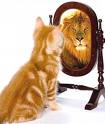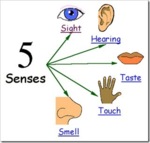Visualization Exercises Improve Performance and Bring Results
 Have you ever found yourself crying while watching a sad movie, you know it is not real, but the impression your brain is receiving is real and it produces tears. WHY?
Have you ever found yourself crying while watching a sad movie, you know it is not real, but the impression your brain is receiving is real and it produces tears. WHY?
Fact: Research has shown that the same neuro-pathways in the brain are activated when you vividly imagine experiencing something as when you actually do it.
Using your mind to create an image of what you want creates a strong impression on the brain and helps improve performance and get results.
A waitress who says “How about a slice of our famous hot apple pie with scoop of our homemade vanilla ice cream and topped with fresh delicious whipped cream?” has a better chance of getting the dessert order than a waitress who says “How about dessert?”

In the first example the waitress is painting a vivid picture in the customer’s mind. This picture activates the customer’s salivary glands to produce a strong desire for the dessert. Did you salivate as you read the first waitress’s description of the dessert?
Athletes apply this principle when imagining having won a competition prior to the actual event. Olympic swimmers, like Michael Phelps, imagine themselves swimming with webbed hands and feet to improve their performance in the water.

Just as visualizing a desired result can make your mouth water and produce results for athletes it is a proven tool for success to build, boost and improve your self esteem.
 When you experience yourself from the inside out as confident, successful, loving and happy those feelings are reflected in what you say, what you do and how you feel. You radiate confidence – while strengthening your healthy self esteem brain pathway.
When you experience yourself from the inside out as confident, successful, loving and happy those feelings are reflected in what you say, what you do and how you feel. You radiate confidence – while strengthening your healthy self esteem brain pathway.
Remember: Visualization is not about seeing yourself trying to succeed at some point in the future. It is about picturing and experiencing, with the full resources of your imagination, your desired results accomplished in the present moment.
Everyone visualizes differently. Our Audio Program ~ What's Your Visualiztion Style? is designed so you can determine how you visualize - Your Visualization Style.
When visualizing, it is important to view the action from the first person point of view. You experience yourself having achieved your goal through your own eyes, rather than watching yourself from the outside.
Adding kinesthetic (what you feel with your goal accomplished) and auditory (what you hear with your goal accomplished) dimensions enhance the process. Include in your visualization:

• What you see, hear and feel with your goal accomplished.
• What you are saying to yourself about accomplishing your goal.
• Write your visualization – a scene that reflects your result accomplished. This allows you to be specific in describing your result. Seeing the words on paper can make more of an impact on your mind and emotions then just imagining the scene in your mind.
• Most people find it easier to visualize with eyes closed to eliminate distractions and focus their attention inward on their desired result.
• Focus on one specific result at a time.
• Your visualization can be long or short. There are no time rules, although the more senses activated while you visualize the more potent the impression on the brain. (According to Esther & Jerry Hicks you only need to visualize for 17 second – and we can all make time for that!)
• Once you have created a visualization focus your attention on it – experiencing and then allowing it to come to form, making sure your thoughts, words and actions are all reflecting and supporting your goal accomplished.
• See yourself on a big screen, in High Definition your goal fully, effortlessly and satisfyingly accomplished.
Use Vision Boards to support your visualizations. Learn about vision boards.
Link back to the Home Page
Link back Self Esteem Exercises
Be Notified of updates for Visualization Exercises Click on the RSS feed on the menu bar and subscribe to our site.
Read our privacy policy.





